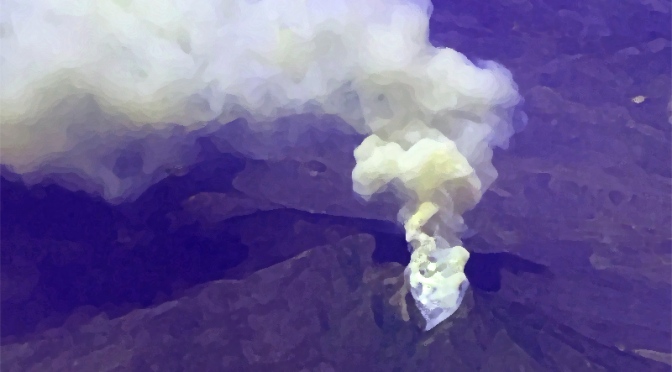 Perhaps because in recent years I’ve had the pleasure of spending time with Steven Feld, a senior scholar at SAR, questions related to sound have been on my mind of late. Steve is noted for many things, but his work on cross-cultural acoustics is widely regarded as inspiringly innovative. It’s also true that as I crossed into my mid-60s I experienced a degree of hearing loss —”consistent with your age,” as an audiologist told me, which was cold comfort. That has led me both to regret some of the wall-of-sound rock concerts I attended in the early 1970s and to be much more protective of my hearing than I was in the past. For anyone who cares a great deal about music, the prospect of losing the ability to fully enjoy it is troubling. As I noted in this blog several years ago, the improvisational genius of jazz is something that inspires my writing as an anthropologist, even if the connection is loose rather than direct.
Perhaps because in recent years I’ve had the pleasure of spending time with Steven Feld, a senior scholar at SAR, questions related to sound have been on my mind of late. Steve is noted for many things, but his work on cross-cultural acoustics is widely regarded as inspiringly innovative. It’s also true that as I crossed into my mid-60s I experienced a degree of hearing loss —”consistent with your age,” as an audiologist told me, which was cold comfort. That has led me both to regret some of the wall-of-sound rock concerts I attended in the early 1970s and to be much more protective of my hearing than I was in the past. For anyone who cares a great deal about music, the prospect of losing the ability to fully enjoy it is troubling. As I noted in this blog several years ago, the improvisational genius of jazz is something that inspires my writing as an anthropologist, even if the connection is loose rather than direct.

So it was with some disappointment that I found myself forced to abandon a recent outdoor performance in Santa Fe by a terrific Kansas City-based Latino band, Making Movies, The group’s music can be described as an amplified, hybridized mélange of Latin American traditions. As the band explains in their website, the latest Making Movies album is “a bold mix of sounds: psychedelia, experimental rock, son cubano, cumbia and various rhythms descended from Yoruba music.” Aside from their formidable musical chops, the band members have been outspoken in their public support of DACA immigrants.
When Making Music started to perform on June 2, there was a crowd of perhaps a hundred, and the vibe was classic summer Santa Fe: cheerful, relaxed, ready to dance. But the sound! The amplified roar was beyond ear-splitting, beyond F16-taxiing-for-takeoff intensity. Most of the crowd seemed unperturbed, but I had to retreat— first to a distance of about 50 yards, then 100. At that distance, and behind rather than in front of the band’s PA system, the audio volume seemed about right. Conversations after the event suggested that I wasn’t the only person driven away by the unnecessary intensity of the amplification.
I had a similar experience a couple of years ago at a Dwight Yokum concert held at the Santa Fe Opera. (Okay, Yokum’s music isn’t my scene, but it was a fundraiser to which I was invited by a friend.). I had neglected to bring ear protection, and my wife and I were reduced to wadding bits of kleenex in our ears in self-defense. After twenty minutes our host was ready to evacuate, and we followed suit. From the parking lot of the Opera—which, by the way, has excellent acoustics with modest amplification—the volume was about right. The sonic assault seemed to have no effect on most of the audience, some of whom were two-stepping in front of the massive PA speakers as we sprinted for the exit.
What’s going on here? A little poking around on the web suggests that I’m not the first to wonder why performances have routinely become so loud that they make the sound of nearby jack-hammers seem almost meditative by comparison. Edward Tufte, known for his book The Visual Display of Quantitative Information and related works, moderates a thoughtful exchange of views about this issue on his website. He and others refer to a 2003 article by Lewis Segal published in the L.A. Times that complains about the sheer acoustic brutality of many concerts. (See also this.). A 2016 article in the Daily Telegraph reported that thirty people walked out of a UB40 concert because the volume affected their heart rhythms and caused one person’s ear to bleed. Yet most of the concert-goers had no complaint about the sound level.
Various explanations for this phenomenon have been floated: (1) The increase in ambient noise levels almost everywhere, which habituates people to high levels of background noise, at some cost to public health; (2) the ubiquity of in-ear headphones, which is causing premature hearing loss in the nation’s youth, in turn suggesting that performances must be louder to register on an audience; (3) performances are getting louder because performers want to “turn their amps up to 11,” which isn’t a theory as much as an anecdotal inference; and (4) the possibility that the sheer physicality or somatic impact of ultra-loud music is what draws people to concerts.
I’m inclined to view the situation as “overdetermined,” to use a word favored by theory geeks. Urban Americans are now so habituated to high levels of ambient noise and ubiquitous digital music that concerts must achieve higher levels of volume to justify the price of admission. I wonder, too, whether part of the draw is a desire for embodied catharsis, which is hard to find in a society where people work ever-longer hours for ever-smaller salaries. From that perspective, the physical impact of ultra-loud concerts—ringing ears and the like—is a feature rather than a bug. It’s also true that concert-goers have little control over audio levels at the events they attend. Their only options, once they’ve gained admission, are to insert ear protection or head for the door.
Later this summer I’m traveling to a place where the only protection I’ll need is insect repellent and sunscreen: the Boundary Waters wilderness of Minnesota, which is blissfully out of cell phone range and where the dominant sounds are the splash of paddles on water and the haunting call of loons. The BWCA lies just to the east of Voyageurs National Park, which has been voted one of the ten quietest places in the United States. I look forward to giving my ears a rest.




You must be logged in to post a comment.